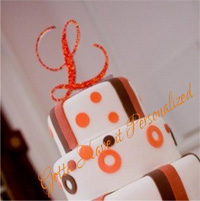To the trained eye, there’s no mistaking European crystals or rhinestones for anything else. There may be a truly bewildering array of colors and materials for rhinestones out there, but none of them have the three defining characteristics that set European rhinestones apart from their competition.
1) European rhinestones are consistent and uniform. Their products are machine cut, which means that every one is the same. There will be no bubbles or other inclusions inside the rhinestone, and the surface of each facet will be perfectly smooth and devoid of ripples or etching. Furthermore, the corners of each facet will meet exactly at a perfect point. This is described as “pointing up.”
By contrast, many imitators’ products are molded, not cut. There may be bubbles, flecks, or other debris inside the rhinestone. The surface of each facet may also have a wavy or rippled appearance, and the corners may be slightly off.
2) European rhinestones outshine their competitors. European rhinestones are made of very high quality crystal that gives them flash and sparkle. Being machine-cut also gives them additional brilliance, since it eliminates the ripples and etching that can dull their sparkle.
In addition, European’s manufacturing techniques have allowed them to produce rhinestones with more facets than their competitors’ (up to 14 for some of their products). Additional facets give each rhinestone additional surfaces for light to bounce off of, contributing to their unrivaled brilliance.
Many competitors’ rhinestones are made of glass or plastic, not the same high-quality lead crystal as European products, and plain glass doesn’t have the same refractive properties as crystal. In addition, since many other rhinestones are molded, not machine-cut, their facets end up distorted and unable to properly reflect light. This means that a side-by-side comparison with a real European rhinestone will readily show that lower-quality imitations simply don’t have the same flash as genuine European.
3) Buyers get what they pay for. Many designers, costumers, and craftspeople go through large quantities of rhinestones and need all of the deals they can get. Unfortunately for them, quality comes at a price, and European rhinestones are more expensive than their competitors’ products.
Some companies have begun to produce machine-cut glass rhinestones that are fraudulently sold as European, and may even come in packaging bearing a counterfeit European logo. For people buying online, it can be next to impossible to get a good look at the merchandise to ascertain whether or not it’s authentic. Fortunately, the price is usually a tip-off– if it seems like a deal that’s too good to be true, it probably is.
European rhinestones are top of the line embellishments, so it’s probably no surprise that other companies want to imitate them. By keeping these three points in mind, it’ll be easy to tell the imitators from the genuine article.
Author
Jason Pistiner
Google


